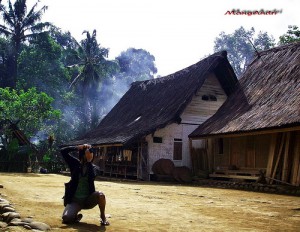 Late last year the Government announced the Kampung Wi-Fi (or Village Wi-Fi initiative). The initiative was mooted by The Information, Communications and Culture Minister, Datuk Seri Dr. Rais Yatim. Currently there are already 1,400 villages with Wi-Fi access and the Government hopes to increase that to 4,000 by year end.
Late last year the Government announced the Kampung Wi-Fi (or Village Wi-Fi initiative). The initiative was mooted by The Information, Communications and Culture Minister, Datuk Seri Dr. Rais Yatim. Currently there are already 1,400 villages with Wi-Fi access and the Government hopes to increase that to 4,000 by year end.
That’s good news to a lot of villagers, broadband penetration is considered a right in certain countries, and bring internet access to rural Malaysia is a moved to be applauded. However, there doesn’t seem to be much on the technical aspect of the project available to the public.
According to this report from the Borneo Post, the Kampung Wi-Fi is a public-private sector initiative that involved expertise from Pernec Paypoint Sdn Bhd, so that’s an unknown company to me. The cost of the Kampung Wi-Fi initiative is anywhere from Rm25,000 to Rm32,000 per village, which for the additional 2,600 villages we plan to deploy to brings total cost of the project to RM65 million (onwards).
That’s a lot of cash, especially when you take into account this report from the Malaysian Mirror that calls the Kampung Wi-Fi initiative a complete farce. “The people of Nanga Berkiok at Merurun, Julau cannot be blamed if they thought that the government’s ‘Kampung WiFi’ project recently implemented at Rumah Guntol was a mere publicity stunt.”
Apparently the dish installed for the internet connectivity broke down after a heavy thunderstorm and the replacement has been slow in coming. It’s quite troubling to note that we seem to be installing hi-end communication equipment in villages throughout the country but don’t have the proper support systems in place to fix them when they break down. This is in addition to the fact that I couldn’t find any further information on the technology their deployment to these villages.
It remains to be seen.
Photo courtesy of: http://www.flickr.com/photos/andri_suprihadi/4198263387/sizes/m/in/photostream/
Below is the latest info regarding Kampung Wi-Fi reported on Bernama on March 15, 2012 :
(Bernama) – The broadbrand penetration rate in Sarawak has reached 48 percent with subscribership numbering 345,627 users, the Dewan Rakyat was told today. Deputy Information, Communications and Culture Minister Joseph Salang said various efforts were being taken by the ministry and the Malaysian Communications and Multimedia Commission to encourage the people to opt for broadband. “Among the steps taken include organising Human Capital Development, ICT and broadband training and promotion programmes to increase the people’s awareness on the facility,” he said when replying to a question from Wong Ho Leng (DAP-Sibu). Salang said for Sabah, a high speed broadband project providing Internet speeds of up to 10 Mbps had already been implemented in Menggatal and was expected to be fully completed by the third quarter of this year. Similar projects would be implemented in Kota Kinabalu, Penampang, Inanam, Tawau, Lahad Datu, Labuan and Elopura, he said. On Wi-Fi villages, he said, till March 1, 1,938 locations had the facility which involved a cost of RM115 million.
From the above, per location implementation cost is approx RM60K. The question is why the cost is so high per location, how many concurrent users each location is capable of supporting and how many of these locations are functioning and serving its objective ? As usual, these information is not available for public consumption or interested party to gauge the success of this particular program vis a vis the government funded cost. Just to note, broadband penetration rate is private telco companies commercial efforts.
Thanks for your comment. It’ll be good to find out what the standard implementation cost per location for a deployment in Kuala Lumpur would look like, also important is the broadband usage rates which differs significantly from the broadband penetration rates.
But thanks for the news. It’ll be interesting to see where this takes us.